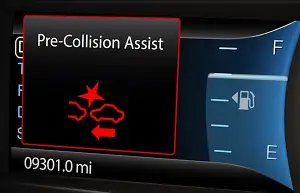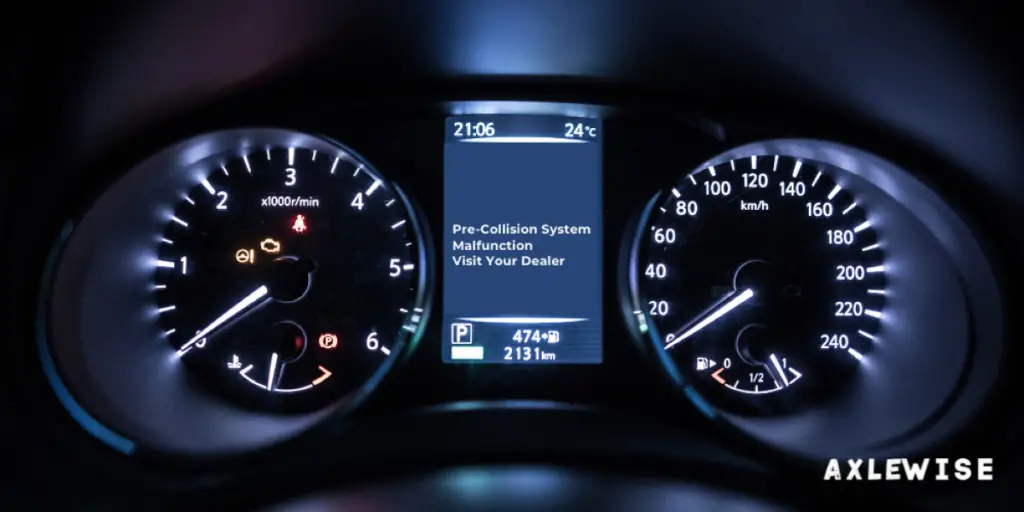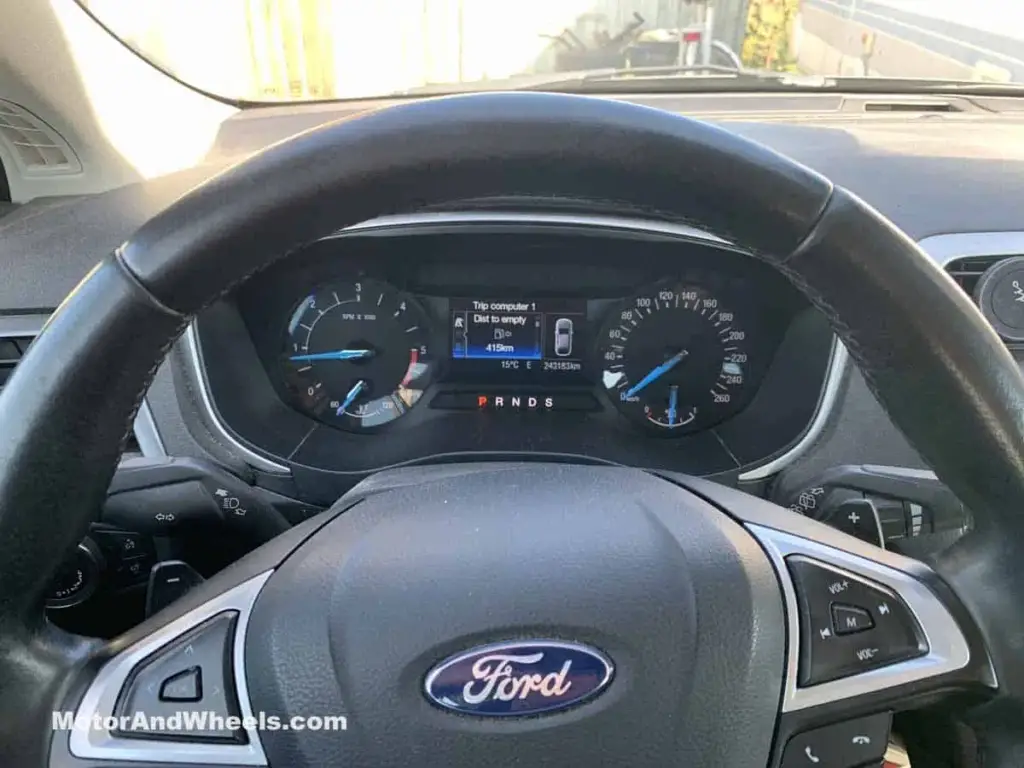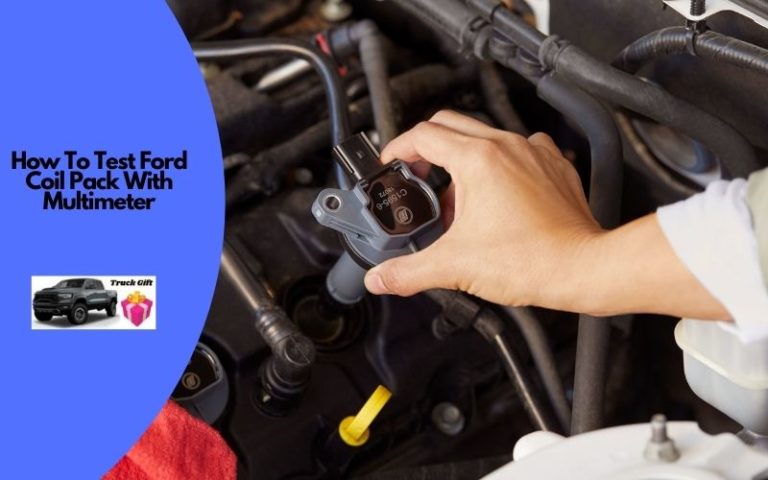Ford Pre Collision Assist Not Available Sensor Blocked [Fixed!]
Ford Pre-Collision Assist is a cutting-edge technology designed to help drivers avoid potential collisions. However, the technology is rendered useless when the system’s sensors become blocked
So, why does the Ford pre collision assist not available sensor blocked message show up?
The most common reasons are debris blocking the path, faulty sensors, low visibility or poorly installed components. This error can also occur due to low visibility, water intrusion, and disruption caused by snow. Professional assistance is needed to clean, repair, or replace components.
Here, we will discuss the importance of keeping your Pre-Collision Assist system in good working order.
What Does Pre Collision Assist Not Available Sensor Blocked Mean?

Pre-Collision Assist not available sensor blocked means that one or more of the sensors used by the Pre-Collision Assist system are blocked or not functioning correctly.
This could be caused by something as simple as dirt or debris on the sensors, or it could be a more serious issue, such as a faulty sensor or wiring issue.
Taking your Ford to the service center will help detect the specific underlying problem. There can be 7 possible reasons for the Ford pre-collision assist not working and the sensor blocked error.
7 Reasons Why Ford Pre-Collision Assist Not Available Sensor Blocked
| Reasons | Symptoms | Solutions to Ford Pre-Collision Assist Not Available Sensor Blocked |
| Debris Blocking The View can cause the Ford Pre-Collision Assist Not Available Sensor Blocked Message | Warning Lights On The Dashboard | Clean The Debris |
| Faulty Sensor | Pre-Collision Light Flashing | Replace The Sensor |
| Front Camera And Radar Covered By Snow | Reduced Responsiveness To Steering Inputs | Warm Up The Area |
| Low Visibility During Severe Weather Conditions | Unresponsive Headlight Beams | Clean The Sensor |
| Water Intrusion | Illuminated Warning Light | Replace The Wiring And Other Affected Components |
| Poorly Installed Sensor | Decreased Engine Performance | Adjust The Sensor By Reinstalling It |
To move forward with the processes of fixing specific problems, you may need to gather up a few products.
- Dewalt Socket Set – A mechanical socket set is contained in a secure, stackable box with a detachable inner tray.
- OBD2 Bidirectional Scan Tool – Scanning of all systems on a network.
- DT Connector Wiring Harness Kit – This harness kit is suitable for all 12V-powered automobiles
Reason 1: Debris Blocking The View
Debris blocking the path of pre-collision sensors can prevent them from functioning correctly. This results in a reduced ability to detect other vehicles and obstacles. It causes the Ford to take longer to stop or fail to stop completely, leading to a potential collision.
Debris can come in the form of dirt, mud, leaves, or anything else that may obstruct the view of the sensors.
Symptom: Warning Lights On The Dashboard
The most common sign of a blocked pre-collision sensor in a car is a warning light on the dashboard, which is usually labeled as “Pre-Collision System”, “Collision Assist” or something similar.
Solution: Clean The Debris
The process of removing debris from the pre-collision sensor involves these essential steps:
- First, park the vehicle in a safe and level area.
- Next, open the hood and locate the sensor. It is located within a vehicle’s front bumper or grille.
- The debris should be carefully removed from the sensor using a soft brush or cloth.
- Dry wipe the sensor with a soft cloth to remove any remaining debris.
The sensor should be tested to ensure it functions correctly and is not blocked.
Reason 2: Faulty Sensor
Over time, the pre-collision sensors can become faulty due to mechanical wear and tear. As a result, the sensor may not accurately detect an object in its path, leading to a delayed reaction time or an inability to detect an object.
The sensor can fail to detect obstacles due to dirt or something blocking the camera view and is unable to process what is ahead. If the sensor is not regularly serviced or maintained, the accuracy of the readings may deteriorate over time.
This usually leads to an increase in false positives or false negatives and the message will pop up.
Symptom: Pre-Collision Light Flashing
The Pre-Collision Assist system on a Ford vehicle uses sensors to detect when a collision is imminent. When a faulty Pre-Collision Assist Sensor is detected, the Pre-Collision light will flash and a warning message may appear in the instrument cluster.
Sometimes, the system may not be able to detect an imminent collision and will not activate an emergency brake or other safety measures.
Such light is usually on when there are issues with the engine or battery and sometimes there are clicking noises when off. But, when the sensors are faulty, this light can be on too.
Solution: Replace The Sensor
Removing an old pre-collision sensor and installing a new one on a Ford is actually very easy.
- Locate the pre-collision sensor, and disconnect the wiring harness using tools such as a socket wrench.
- After you have disconnected the wiring harness from the old pre-collision sensor, you can then remove the old sensor from the vehicle.
- Now, install the new pre-collision sensor. To do this, you will need to mount the new pre-collision sensor in the same position as the old one.
- After mounting, connect the wiring harness to the new pre-collision sensor.
- Test the new pre-collision sensor to ensure it is working correctly. This can be done by visual inspection, system, calibration, and impact tests. Drive around under different conditions to see how the system responds.
When the process is completed, reconnect the battery and start the engine to ensure that the new pre-collision sensor is working correctly.
Reason 3: Front Camera And Radar Covered By Snow
When a Ford vehicle’s front camera and radar are covered by snow, it can block the sensor. As a result, the snow can interfere with the sensors, preventing them from accurately detecting the vehicle’s surroundings and alerting the driver.
Symptom: Reduced Responsiveness To Steering Inputs
Blocked view disrupts the vehicle’s steering angle and speed, decreasing responsiveness to steering inputs. The check brake system message appears and a delay in the vehicle’s response.
Solution: Warm Up The Area
To ensure the system is working correctly, it is essential to clear any snow off the front camera and radar before driving. And then warm up the area, so the snow doesn’t impact the components.
It involves using an external heating system to melt the snow and ice.
- Use electric heating pads or heated windshield wipers to melt the snow and ice and clear the sensors.
- To ensure it works, place these electric heating pads or heated windshield wipers on top of the sensors and wait until the ice is melted.
- You can also apply a de-icing spray to the sensors and wait until the ice is melted.
The heated windshield wipers can be especially helpful in this situation. This is because they can help quickly remove the snow and ice from the sensors without manually wiping them off.
Reason 4: Low Visibility During Severe Weather Conditions
When temperatures drop below freezing, visibility can be severely impacted by a combination of snow, ice, and fog. This can interfere with the pre-collision sensors on a vehicle, blocking their ability to detect obstacles in the road.
The sensors rely on light from the environment, such as headlights or streetlights, to detect potential obstacles and react accordingly. Unfortunately, the low visibility of severe cold weather conditions can make things difficult. It is impossible for the sensors to detect obstacles in the road.
This can make the iconic Ford vehicle less likely to respond quickly to avoid a collision.
Symptom: Unresponsive Headlight Beams
When the pre-collision sensors are blocked due to low visibility caused by severe weather conditions, the headlights on Ford can become unresponsive. This is because the sensors automatically adjust the headlight beam angle to ensure optimum visibility.
This means when the sensors are blocked, the light beam cannot adjust accordingly. Real dangers can potentially happen when such a scenario becomes apparent.
Solution: Clean The Sensor
The process of cleaning pre-collision sensors to avoid low visibility due to extremely cold weather conditions involves these essential steps:
Step 1: Remove any debris or dirt from the sensor’s surface. We have explained the cleaning process before.
Step 2: Checking the sensor’s lens for any condensation or frost is essential. If present, the lens should be gently wiped with a soft cloth and warm water.
Using a specialized cleaning solution designed specifically for pre-collision sensors is also good. This cleaning solution should be applied with a soft cloth and allowed to sit on the sensor’s surface for a few minutes before being wiped off.
Step 3: Check the area around the sensor for any obstructions. This includes checking for any ice, snow, or debris that may be blocking the view of the sensor. If any obstructions are found, they should be removed or cleared away before continuing.
Following these steps will help ensure that the pre-collision sensors remain clean and free of any obstructions, allowing for improved visibility in extremely cold weather conditions.
Reason 5: Water Intrusion
Water entering the sensor can cause corrosion of the wiring, rusting of the metal parts, and damage to the internal components. This can cause the sensor to become blocked and unable to detect impending collisions.
Symptom: Illuminated Warning Light
If the pre-collision sensor becomes blocked, it will not be able to monitor the exhaust system accurately. And so, the illuminated warning light will be triggered to indicate an issue with the exhaust system.
Solution: Replace The Wiring And Other Components Impacted
Recently, Ford has designed pre-collision sensors with sealed housing and rubberized seals to prevent water intrusion. If the water has already intruded on the sensor, follow these steps to fix the sensor.
The process must include a qualified technician working with you.
- First, disconnect the power from the vehicle.
- Then, the wiring harness and connectors for any damage caused by water intrusion should be inspected.
- If necessary, replace any components that have been damaged by water. Depending on the type of device and the components, you may need to use screwdrivers, pliers, soldering iron, etc.
- With the technician’s help, reconnect the wiring harness, ensuring all connections are secure.
- When done, test the pre-collision sensor to ensure it works properly.
When the result is satisfactory, you can reconnect the power, and the pre-collision sensor will be ready for use.
Reason 6: Poorly Installed Sensor

First, ask this question, can a vehicle like Ford’s pre-collision sensor be poorly installed? If yes, it is possible and poor installation can result in the sensor not working correctly.
This further causes the sensor not to detect potential hazards and thus not provide the driver with the appropriate warning. Poor installation can also lead to false alarms and other issues.
Symptom: Decreased Engine Performance
Poorly installed sensors can lead to decreased engine performance in several ways. the vehicle may experience power loss and stalling, as well as an illuminated check engine light.
It may further destroy the spark plugs and cause the engine to overheat or misfire. For that, changing spark plugs properly is needed. However, the situation may not go that extreme, and the right solution will be offered accordingly.
Solution: Adjust The Sensor By Reinstalling It
The process of adjusting and re-installing the pre-collision sensor of the Ford is as below:
- First, inspect the sensor wiring to ensure it is properly connected and has no damage.
- After that, check the sensor mounting location to ensure it is in the right place and not blocked by any other components.
- You have to adjust the sensor sensitivity so that it can detect obstacles at the right distance.
- The sensor’s sensitivity can be adjusted by changing the gain settings or by using a potentiometer to adjust the sensitivity.
- Finally, you should check the mounting and alignment of the sensor to ensure it is correctly installed.
- If not, secure the sensor using a wrench or screwdriver to loosen and tighten the mounting bolts. Also, align the sensor to the car body using a level, plumb bob, or laser alignment tool.
Once the adjustments have been made and the re-installing is done, see if the sensor is functioning correctly. If the issue persists, you may need to replace the sensor altogether.
How To Prevent Pre-Collision Sensors From Getting Blocked

You can follow some simple tips and tricks to prevent the pre-collision sensors from getting blocked.
- Regularly clean the sensors: Cleaning the pre-collision sensors regularly can help prevent them from becoming blocked. This can be done with a soft cloth and some car cleaning solution.
- Install protective covers: Protective covers for the pre-collision sensors can help keep them from becoming blocked by debris and dirt.
- Avoid parking under trees: Parking under trees or in areas with a lot of dirt and dust can cause the pre-collision sensors to become blocked. Instead, try to park in a clean, open area when possible.
- Check for obstructions: Before driving, inspect the pre-collision sensors for any obstructions that could be blocking them.
- Install protective grills: Protective grills can help keep debris and dirt away from the pre-collision sensors, reducing the chance of them becoming blocked.
Frequently Asked Questions (FAQs):
Are there any risks associated with an unblocked Ford pre-collision assist sensor?
Yes, there are risks associated with an unblocked Ford pre-collision assist sensor. The system may not be able to detect obstacles in time, leading to an increased risk of a collision. The system may also cause false alarms and distract the driver, further increasing the danger of an accident.
How is my Ford pre-collision assist system working?
Your Ford pre-collision assist system is designed to help you avoid or reduce any chances of collision. To ensure optimal performance, you should regularly check that your collision detection system’s camera-based sensors, radar, and cameras are clean and unobstructed.
How to turn on the pre-collision system?
To turn on the pre-collision system, access the settings menu in the vehicle’s infotainment system and find the option to enable it. Sometimes, there may also be a button or switch to press in the cabin, and that may do it.
Endnote
The Ford pre-collision assist not available sensor blocked issue has been fixed! Thanks to the quick solutions that technicians suggest, the sensor will function properly, and rest assured that your Ford is safe and secure. This resolution will help keep things safe and prevent any potential accidents.
It is, therefore, time to go; goodbye then!




![Is 2007 F150 Trailer Light Use Separate Fuse? [Explained!]](https://truckguidepro.com/wp-content/uploads/2023/03/is-2007-f150-trailer-light-use-seperate-fuse.png)
![How To Bleed Clutch On A Ford Ranger? [Easy Steps]](https://truckguidepro.com/wp-content/uploads/2021/08/How-To-Bleed-Clutch-On-A-Ford-Ranger-768x480.jpg)

